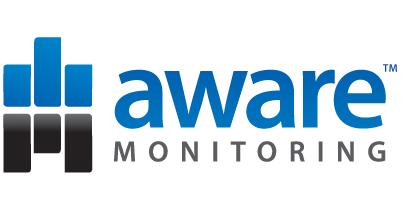When we set out on our startup journey we didn’t know what we were going to make. So we named our company Viisys, which is an abbreviation of Seven Systems (seven being in the roman numerals VII). The seven (vii) means the 7th step of enlightenment and Sys refers to Tech systems. Seven is also a lucky number but who needs luck?
Moving the clock forward we have been enlightened and our new website monitoring app, Aware Monitoring will be released later this year 🙂 We’re now ready to change our name to reflect what our service does i.e. monitoring. We will now trade and be known by our product name, Aware Monitoring and not Viisys. This change of identity is not unusual. Our good friends Andy and Ali at Huddle.net started out as Ninian Solutions and now trade as Huddle.

Simon, my co-founder, recently posted that its really exciting to see our branding coming together. To complete the brand switch over I’ve now changed company name on my LinkedIN profile and email footer to Aware Monitoring. I’ve also removed the ‘About’ page on this blog and updated the ‘Who am I’ without reference to Viisys.
These changes have also been a chance to update my ‘about/Who am I’ as they felt a little ‘corporate’ and unfriendly. A summary bio is now also on the front page. Hopefully you’ll agree that the new blog bio is more straight forward and friendly.. Here’s the old version:
About
Innovations including the internal combustion engine, electricity and the Internet have radically changed our lives. I am interested in one thing and that is change, love it or hate it change is inevitable.
Market innovators and entrepreneurs drive business change through marketing strategies. We can only speculate on what the future holds, so join me on this journey to uncover how new software technologies may change the way we work and live.
This blog is for for marketers, technology innovators, fellow entrepreneurs and anyone else interested in new social media technologies and how they are affecting businesses and organisations.
The blog was formed by Nick Barker in 2008. If this is your thing subscribe to the feed and stay in touch.
Who am I
Having worked in the IT industry for 20 years I have seen many innovations and much change from the very early days of the IBM PC through to the growth of global outsourcing and today the rise of social media. My experience ranges from working in small owner manager firms to global software giants in a variety of sales, pre-sales and product management roles.
Today I run a start-up, Viisys, technology company with my co-founder Simon Oxley based at the University of Nottingham incubator facilities. We have just released a central website, E20portal.com, to inform firms of the value of Enterprise2.0 technologies. For more information check me out at LinkedIN or my firm Viisys at www.viisys.com.
And you can see the new one over to the right..





